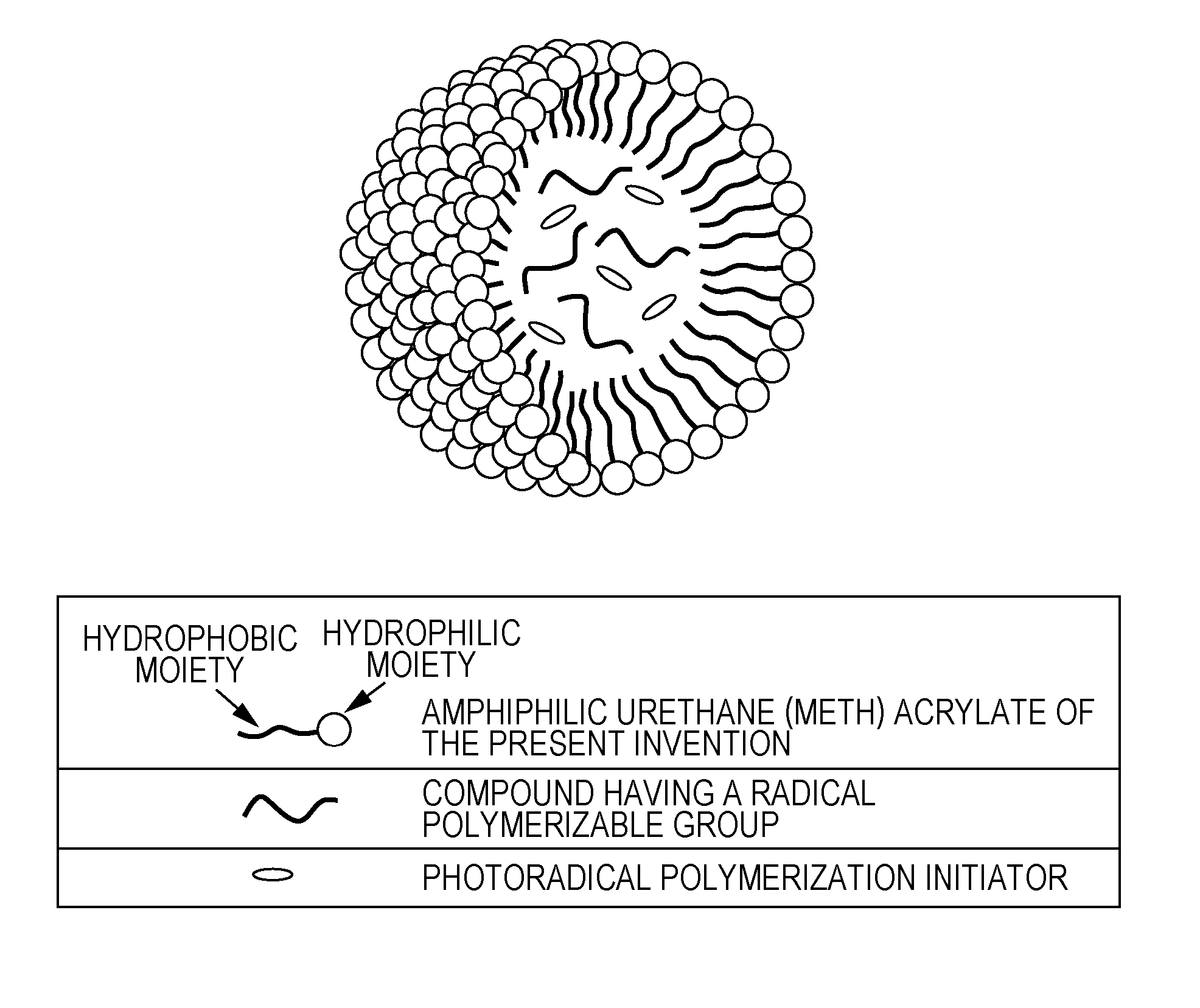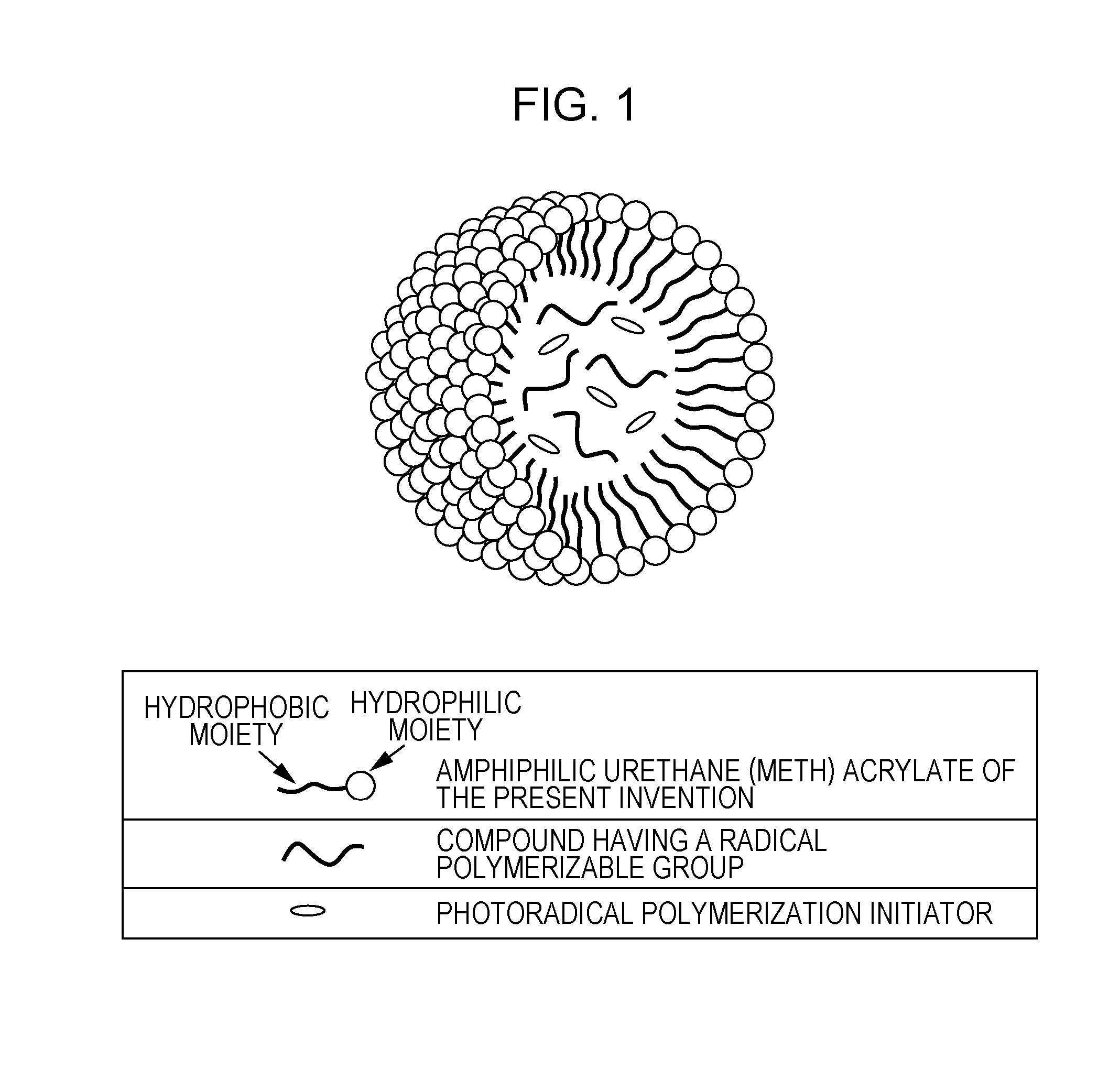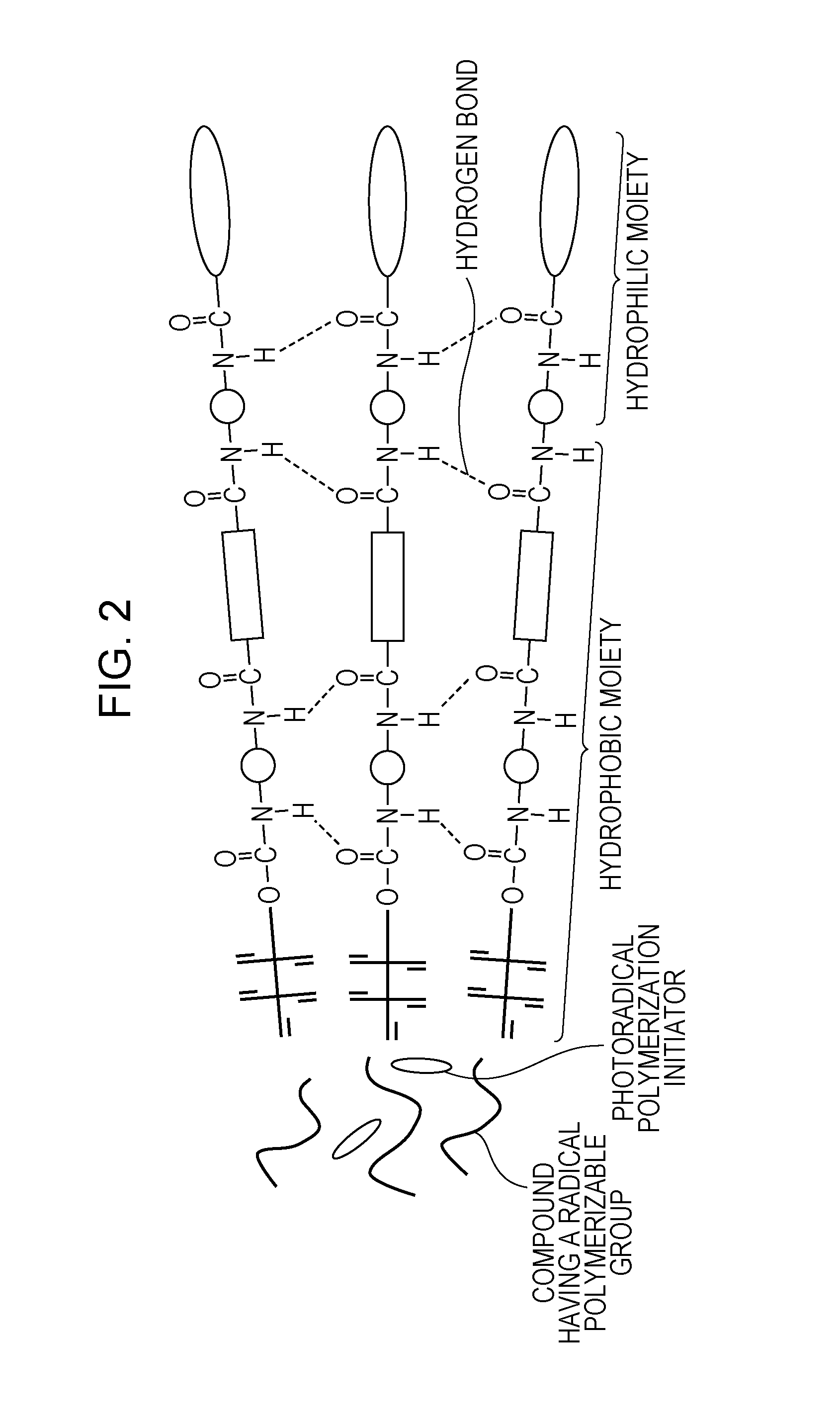Ink composition for ink jet recording and ink jet recording method
a technology of ink jet recording and composition, which is applied in the direction of inks, instruments, transportation and packaging, etc., can solve the problems of deterioration of difficulty in wet and spread of ink compositions on recording media, and achieve excellent solid filling properties, storage stability and abrasion resistance
- Summary
- Abstract
- Description
- Claims
- Application Information
AI Technical Summary
Benefits of technology
Problems solved by technology
Method used
Image
Examples
synthesis example 1
2-1. Synthesis Example 1
Synthesis of Amphiphilic Urethane Acrylate (e)
[0298]In a reaction vessel equipped with a stirrer, a cooling tube, a dropping funnel and an air introduction tube, 444.6 parts (2 moles) by mass of IPDI and 400.0 parts by mass of polypropylene glycol having a weight average molecular weight of 400 were placed, and while the resulting mixture was being stirred, 0.34 parts by mass of tin octylate were added to the mixture, the temperature inside the reaction vessel was increased to 90° C., and the resulting mixture was allowed to react for 1.5 hours. Then, 1400.0 parts by mass of methoxy PEG 2000 and 0.90 parts by mass of tin octylate were added to the reaction mixture, and the resulting mixture was allowed to react further for 1.5 hours. Next, in the reaction vessel, 1300 parts by mass of dipentaerythritol pentaacrylate, 1.77 parts by mass of methoquinone and 2.13 parts by mass of tin octylate were placed and mixed, and under air bubbling, the temperature inside ...
synthesis example 2
3-1. Synthesis Example 2
Preparation of (Aqueous) Photocurable Resin Emulsion (e-2)
[0301]In the same reaction vessel as in Example 1, 23.9 parts by mass of the amphiphilic urethane acrylate (e) obtained above, 10.3 parts by mass of polypentaerythritol polyacrylate, 3.3 parts by mass of a photoradical polymerization initiator (TPO) and 0.07 parts by mass of a fluorescent brightening agent (KCB) were placed, and while the resulting mixture was being stirred, the temperature inside the vessel was increased to 80° C. and maintained at 80° C. for 2 hours. Next, the temperature inside the vessel was cooled to 50° C., and then, while the mixture was being stirred, 2.4 parts by mass of a cross-linking agent (PEMP) was added to the mixture, and the mixture was continuously stirred as it was for 15 minutes. Then, 60 parts by mass of deionized water was added to the mixture, the mixture was maintained at 50° C. for 1 hour, then the temperature inside the vessel was increased to 80° C., and the ...
synthesis example 3
3-2. Synthesis Example 3
Preparation of (Aqueous) Photocurable Resin Emulsion (e-4)
[0302]In the same reaction vessel as in Example 1, 21.6 parts by mass of the amphiphilic urethane acrylate (e) obtained above, 9.2 parts by mass of polypentaerythritol polyacrylate, 5.0 parts by mass of a photoradical polymerization initiator (TPO), 1.7 parts by mass of a photoradical polymerization initiator (DETX) and 0.06 parts by mass of a fluorescent brightening agent (KCB) were placed, and while the resulting mixture was being stirred, the temperature inside the vessel was increased to 80° C. and maintained at 80° C. for 2 hours. Next, the temperature inside the vessel was cooled to 50° C., and then, while the mixture was being stirred, 2.5 parts by mass of a cross-linking agent (PEMP) was added to the mixture, and the mixture was continuously stirred as it was for 15 minutes. Then, 60 parts by mass of deionized water was added to the mixture, the mixture was maintained at 50° C. for 1 hour, then...
PUM
| Property | Measurement | Unit |
|---|---|---|
| surface tension | aaaaa | aaaaa |
| viscosity | aaaaa | aaaaa |
| size | aaaaa | aaaaa |
Abstract
Description
Claims
Application Information
 Login to View More
Login to View More - R&D
- Intellectual Property
- Life Sciences
- Materials
- Tech Scout
- Unparalleled Data Quality
- Higher Quality Content
- 60% Fewer Hallucinations
Browse by: Latest US Patents, China's latest patents, Technical Efficacy Thesaurus, Application Domain, Technology Topic, Popular Technical Reports.
© 2025 PatSnap. All rights reserved.Legal|Privacy policy|Modern Slavery Act Transparency Statement|Sitemap|About US| Contact US: help@patsnap.com



